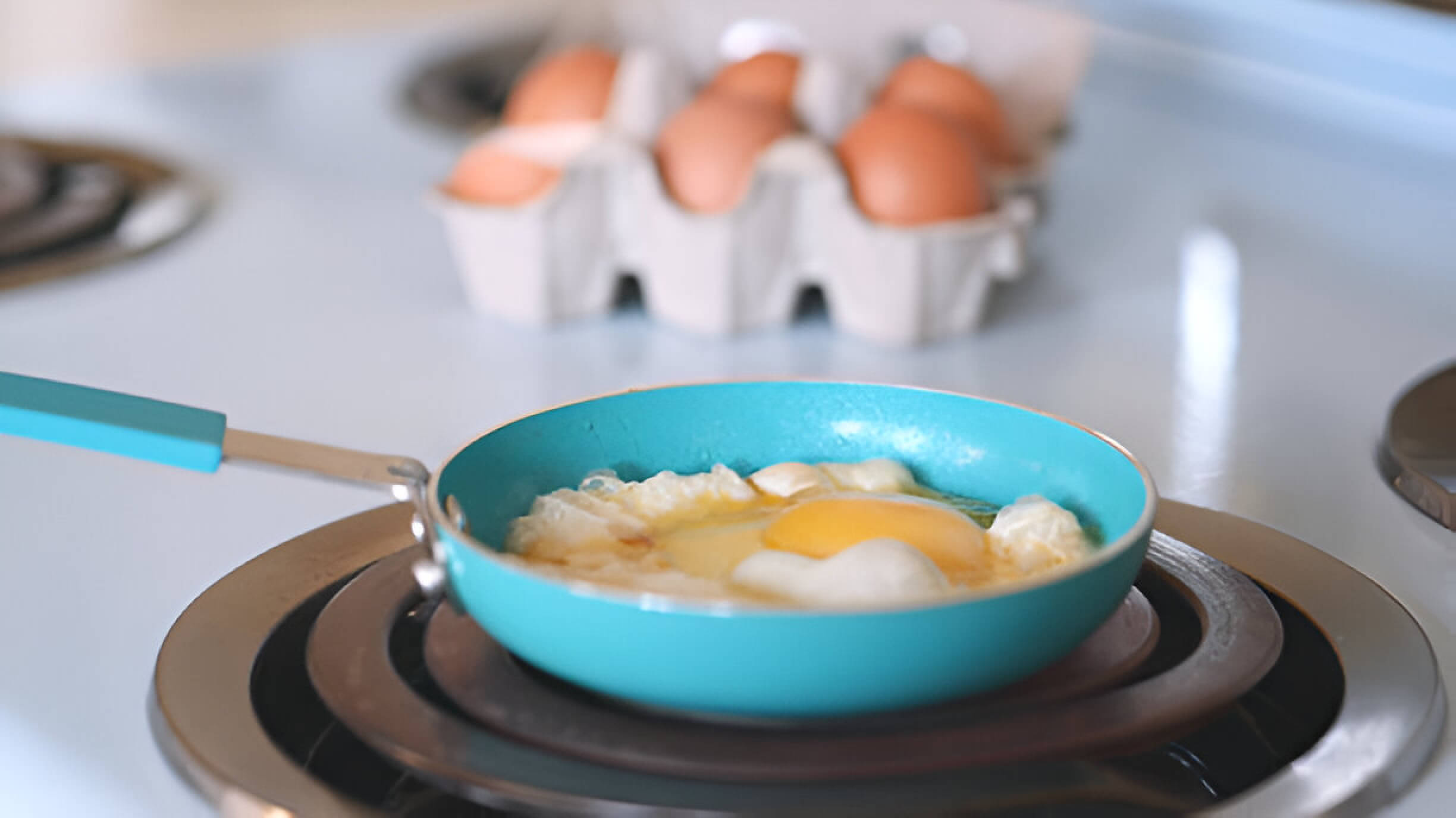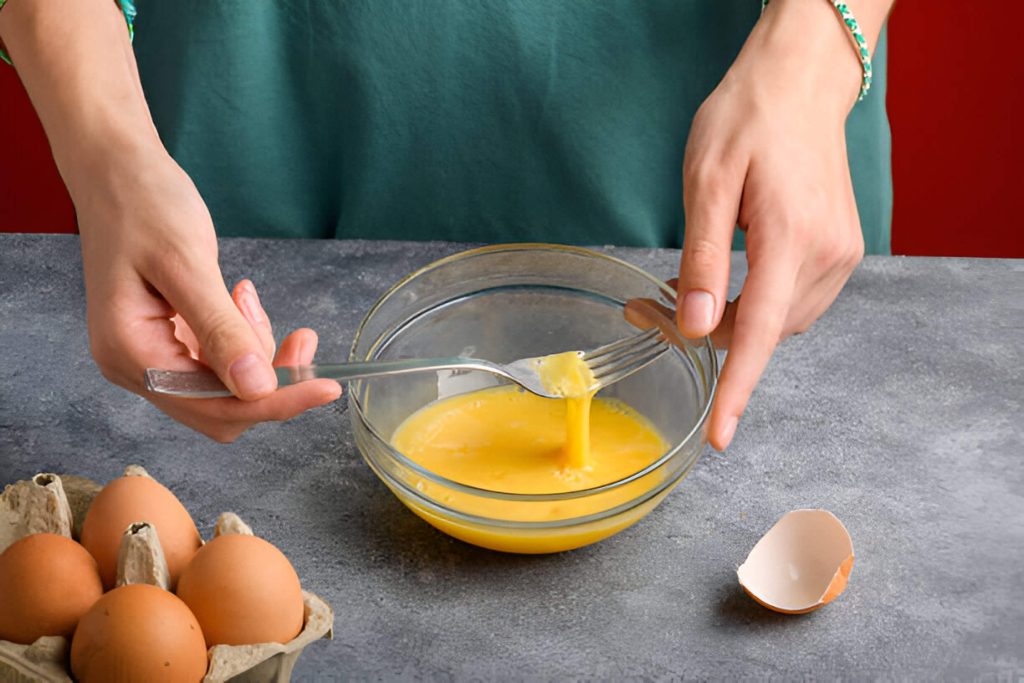
An over easy egg is a fried egg with a fully cooked white and a runny yolk. This cooking method requires precision and timing to achieve the perfect balance of textures. Before diving into the cooking process, it’s essential to gather the right tools and ingredients.
Essential Tools and Ingredients
To cook the perfect over easy egg, you’ll need a few essential tools and ingredients. Start with a high-quality non-stick pan, which will prevent the egg from sticking and ensure easy flipping. A thin, flexible spatula is crucial for gently turning the egg without breaking the yolk.
Fresh eggs are the cornerstone of a delicious over easy egg. Choose eggs that are as fresh as possible for the best flavor and texture. You’ll also need a small amount of butter or oil to lightly grease the pan and add richness to the egg.
Don’t forget to have salt and pepper on hand to season your egg. Some cooks prefer to season before cooking, while others add seasoning after the egg is plated. Experiment to find your preference.
With these tools and ingredients at the ready, you’ll be well-equipped to create a perfectly cooked over easy egg with a fully set white and a warm, runny yolk.
How to Cook the Perfect Over Easy Egg: Preparing Your Cooking Surface
Before you begin cooking your over easy egg, it’s crucial to properly prepare your cooking surface. Start by selecting a non-stick skillet or a well-seasoned cast-iron pan. Preheating the pan is essential for achieving the perfect texture and preventing sticking. Place your chosen pan over medium-low heat and allow it to warm up for about 2-3 minutes.
Once the pan is preheated, it’s time to add a small amount of fat to ensure easy flipping and enhance flavor. You can use butter, oil, or a combination of both. For optimal results, use about 1 teaspoon of fat per egg. Swirl the pan to evenly distribute the fat across the surface.
Maintaining the optimal cooking temperature is key to mastering the over easy egg. The ideal temperature should be hot enough to set the egg whites quickly but not so hot that it burns the edges. If you hear a loud sizzle when the egg hits the pan, your temperature may be too high. Adjust the heat as needed to maintain a gentle sizzle throughout the cooking process.
By carefully preparing your cooking surface with proper preheating, adding the right amount of fat, and maintaining an optimal cooking temperature, you’ll be well on your way to creating the perfect over easy egg.
Step-by-Step Guide to Cooking an Over Easy Egg

To cook the perfect over easy egg, start by cracking the egg gently into a small bowl to ensure no shell fragments are present. Heat a non-stick skillet over medium-low heat and add a small amount of butter or oil. Once the pan is heated, carefully slide the egg into the skillet.
Allow the egg to cook for about 2-3 minutes, or until the white is mostly set but the yolk is still runny. The cooking time may vary slightly depending on your stove and pan, so keep a close eye on it.
When it’s time to flip, use a thin spatula to gently slide under the egg. In one swift motion, flip the egg over, being careful not to break the yolk. The flipping technique is crucial for maintaining the integrity of the over easy egg.
After flipping, cook for an additional 30 seconds to 1 minute for the final cooking stage. This brief cooking time ensures the top white is set while keeping the yolk runny. Remove from heat and serve immediately for the best taste and texture.
Tips for Achieving the Perfect Over Easy Egg
Achieving the perfect over easy egg requires attention to detail and a few key techniques. Start with fresh eggs, as they hold their shape better during cooking. Allow your eggs to come to room temperature before cooking, which helps prevent the shock of cold eggs hitting a hot pan. When cracking the egg, do so gently to avoid breaking the yolk. Use a non-stick pan or well-seasoned cast iron skillet for best results.
Timing is crucial for over easy eggs. Cook the first side on medium heat until the whites are mostly set, which usually takes about 2-3 minutes. Carefully flip the egg using a thin spatula, being mindful not to break the yolk. Cook the second side for just 30 seconds to 1 minute, depending on how runny you prefer your yolk.
Remember, gentle handling is key throughout the process. Avoid pressing down on the egg with your spatula, as this can cause the yolk to break. With practice and these tips in mind, you’ll soon be serving up perfectly cooked over easy eggs every time.
Common Mistakes to Avoid
When preparing an over easy egg, several common pitfalls can compromise the perfect result. One frequent mistake is overcooking the yolk, which should remain runny for the ideal over easy consistency. To avoid this, ensure you flip the egg quickly and remove it from heat promptly.
Another issue is accidentally breaking the yolk during cooking. Handle the egg gently when cracking it into the pan and use a spatula with a thin edge for flipping to maintain the yolk’s integrity.
Eggs sticking to the pan can also be problematic. To prevent this, use a non-stick pan or add a sufficient amount of butter or oil to the cooking surface. Additionally, ensure your pan is properly preheated before adding the egg.
Cooking over high heat is a common error that can lead to unevenly cooked eggs with crispy edges and undercooked centers. Instead, opt for medium-low heat, allowing the egg to cook more evenly and giving you better control over the process.
By avoiding these common mistakes, you’ll be well on your way to mastering the art of cooking the perfect over easy egg.
Serving Suggestions and Pairings
An over easy egg is a versatile breakfast staple that can elevate various dishes with its runny yolk and perfectly set whites. Here are some delicious serving suggestions and pairings to make the most of this classic preparation:
Toast is a natural companion for an over easy egg. Serve the egg atop a slice of crusty sourdough or whole grain bread to soak up the rich yolk. For a trendy twist, pair it with smashed avocado on toast for a nutritious and Instagram-worthy meal.
Bacon and over easy eggs are a match made in breakfast heaven. The crispy, salty bacon complements the creamy yolk beautifully. Consider adding a slice of tomato for freshness and color.
For a more indulgent option, drizzle hollandaise sauce over your over easy egg to create a simplified version of Eggs Benedict. This combination works wonderfully on an English muffin or as part of a full breakfast plate.
Incorporate over easy eggs into other breakfast dishes like breakfast burritos, breakfast sandwiches, or atop a bed of hash browns for a hearty start to your day. The possibilities are endless, making the over easy egg a true breakfast MVP.
Nutritional Benefits of Over Easy Eggs
Over easy eggs are not only a delicious breakfast option but also pack a significant nutritional punch. These lightly cooked eggs are an excellent source of high-quality protein, providing about 6 grams per large egg. This protein content supports muscle growth, tissue repair, and overall body function.
Rich in vitamins, over easy eggs contain essential nutrients like vitamin A, which promotes eye health, and vitamin D, crucial for bone strength. They’re also a good source of B-complex vitamins, particularly B12, which is vital for nerve function and red blood cell formation.
Minerals abound in over easy eggs, including selenium, an important antioxidant, and choline, which supports brain health. They also contain iron, zinc, and phosphorus, all contributing to various bodily functions.
Calorie-wise, a large over easy egg typically contains about 70-80 calories, making it a relatively low-calorie food option. This makes eggs suitable for those managing their weight or following calorie-restricted diets.
However, it’s important to note dietary considerations. While eggs are nutrient-dense, they are also high in cholesterol.
Variations on the Over Easy Egg
When it comes to preparing eggs, there are several variations on the classic over easy style that cater to different preferences. Over medium eggs are cooked slightly longer, resulting in a partially set yolk that’s still somewhat runny. For those who prefer a fully cooked yolk, over hard eggs are flipped and cooked until the yolk is completely set.
Sunny side up eggs offer a different approach, where the egg is fried on one side only, leaving the yolk raw and the whites just set. This method preserves the vibrant yellow color of the yolk and creates a visually appealing presentation.
Basted eggs provide a unique twist, combining elements of both sunny side up and over easy styles. The egg is cooked on one side, but hot oil or water is spooned over the top to help cook the whites and create a thin film over the yolk.
Each of these variations offers a distinct texture and flavor profile, allowing egg enthusiasts to customize their breakfast experience to their liking. Whether you prefer a runny yolk or a fully set one, there’s an egg preparation method to suit your taste.



